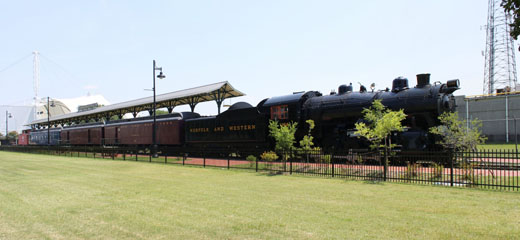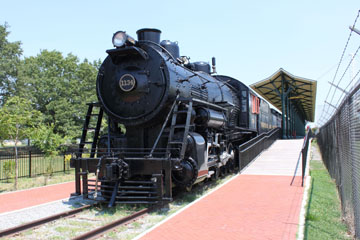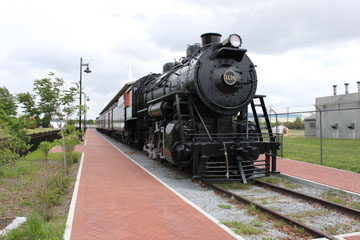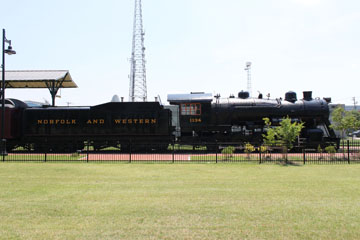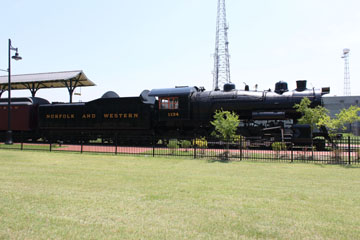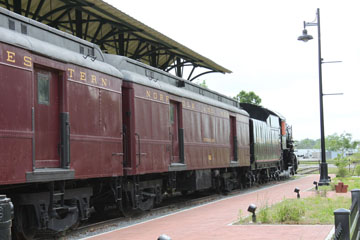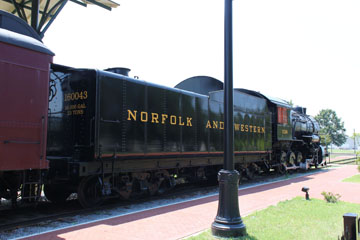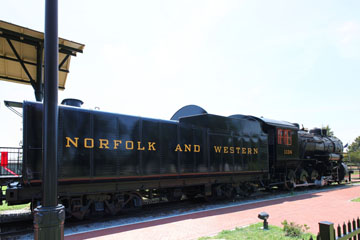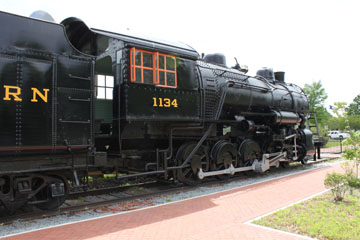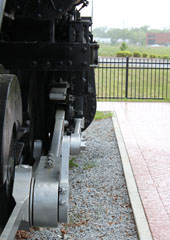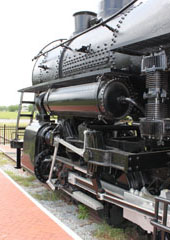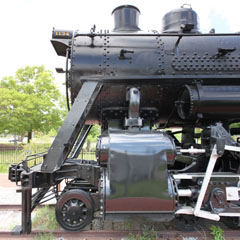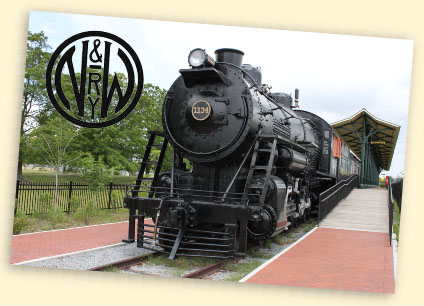

#1134 is one of five surviving Norfolk & Western M Class 4-8-0 locomotives. Retired and sold to Virginia Scrap Iron & Metal in 1950, with M2 #1118, M2c #1151 and W2 (2-8-0) #917, the so called "Lost Engines of Roanoke" languished in the company's yard in South Jefferson Street largely unnoticed for nearly fifty years. They were later joined by Baldwin built Chesapeake Western DS-4-4-600 switchers #662 and #663, along with other rolling stock and assorted tenders.
In 1997, however, Richard Jenkins drew popular attention to the locomotives through his website http://lostengines.railfan.net/ and momentum grew for their reclamation and restoration. Finally, in August 2009, all three locomotives were moved out destined for restoration. #1118 went to the NRHS Roanoke Chapter's 9th Street Yard in Roanoke, VA, and #1151 went to the Virginia Museum of Transportation. Although restoration of #1151 had not started when I last visited, you can see photos of it in its "raw" condition on the Virginia Museum of Transportation page of this website.
#917 has also found a new home at the Buckeye Express Diner, 810 State Rt. 97 in Bellville, Ohio.
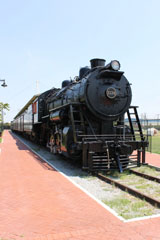
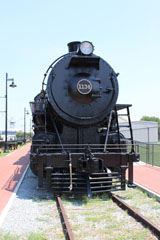
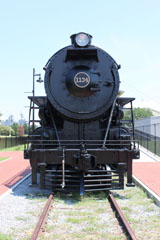
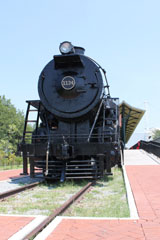
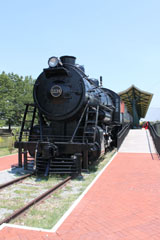
#1134 has found a home near the intersection of Port Center Parkway and Pavilion Drive in Portsmouth, VA. Although many components had to be replaced and little of the backhead survives, it looked really great when I visited.
It is displayed with NW C-31 Caboose #518666, NW Passenger Car #1020 and NW Mail Car #1401. When I passed through, the collection had yet to open, but I was able to get some great shots of the locomotive thanks to the guys at the Railroad Museum of Virginia, who allowed me into the enclosure.
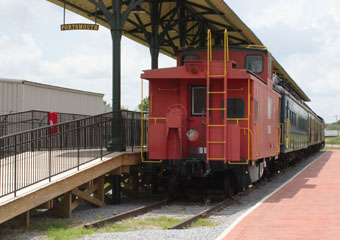
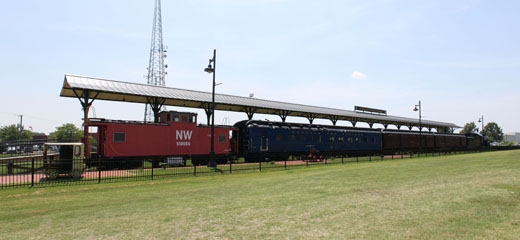
In 1910, fifty more 4-8-0s were ordered from Baldwin (#1011-#1049) designated M2, while the N&W's Roanoke shops built three M2a (#1150-#1152) and two M2b (#1153 & #1154) locomotives. These were later modified with superheaters and standerdised with six newly built M2c class locomotives (#1155-#1160).
The Baldwin locomotives were built with Walschaert valve gear, but the Roanoke built Twelve Wheelers were all equipped with Baker valve gear, which was to become standard on the railroad’s steam power.
The M Class was designed to haul freight and coal over the Blue Ridge Mountains in West Virginia. Seventy-five were supplied by Alco and fifty by Baldwin in 1906 numbered #375-#499. You can
see two survivors from this order on the
Strasburg Rail Road and NW #433 pages of this website.
The following year, another fifty were ordered from Alco and fifty from Baldwin designated M1 and numbered #1000-#1099. These were supplied with Walschaert valve gear in place of the M Class's Stephenson gear.
They probably survived because they were the only non-articulated freight engines rostered by the N&W.
Their eastbound Norfolk to Petersburg, VA, slow freight tonnage rating was 1,750 tons, 1,850 tons westbound. From Williamson, VA, to Portsmouth, OH, they were rated 3,600 tons and from Portsmouth to Columbus, OH, 3,100 tons.
Like the newly built M2c, many of the M and M1 locomotives were later fitted with superheaters as well as mechanical stokers. Even after upgrading, however, they proved unpopular with crews because of their rough riding qualities and poor steaming probably due to the rather small firebox heating surface area of 179 sq ft.
Although soon relegated to branch lines and switching with the advent of more powerful engines, particularly the 2-8-8-2 Mallet compound Y Class after WWI, they remained in service well into the 1950s.
Weighing 279,530 lbs, 239,530 lbs on its 56" drivers, total heating surface of 4,351 sq ft included a 45 sq ft grate, 13 sq ft of arch tubes and 765 sq ft superheating. With 24” x 30” cylinders, it operated at a boiler pressure of 200 psi delivering 52,457 lbs tractive effort.
The current 16,000 gallon water and 23 ton coal tender is larger than the original.


